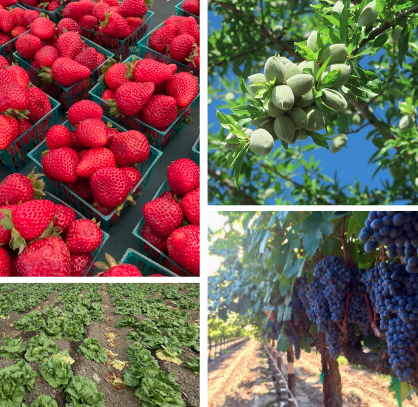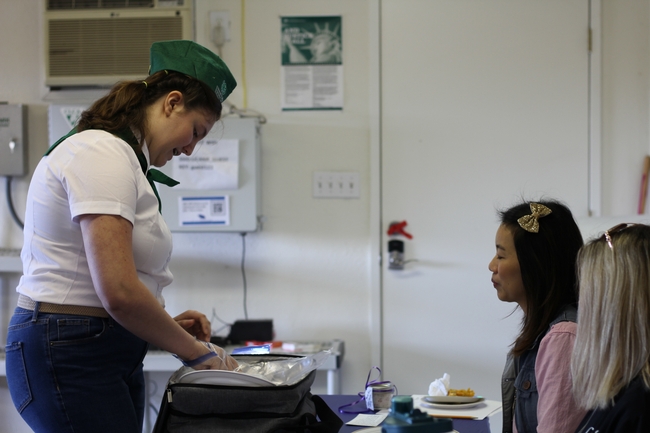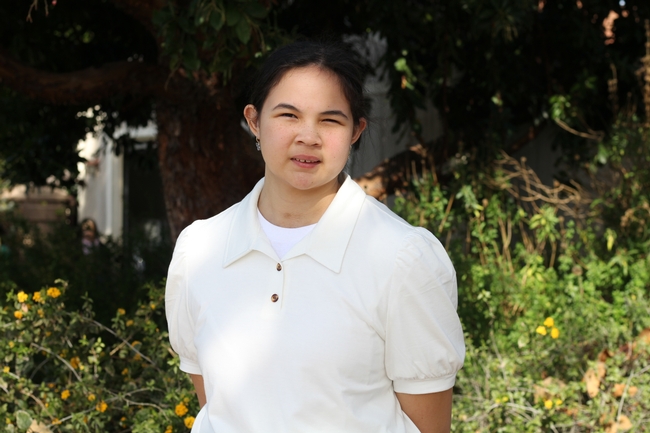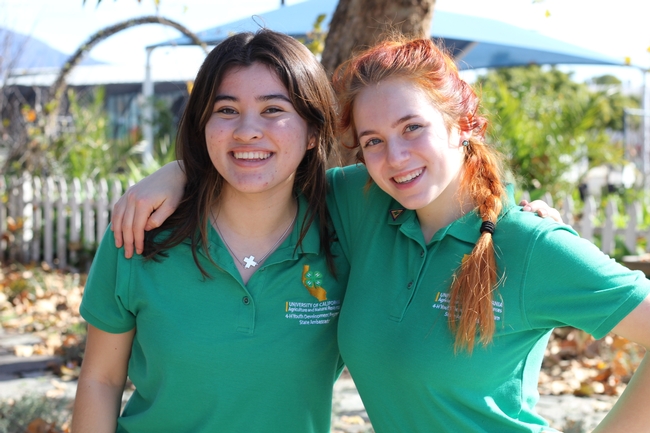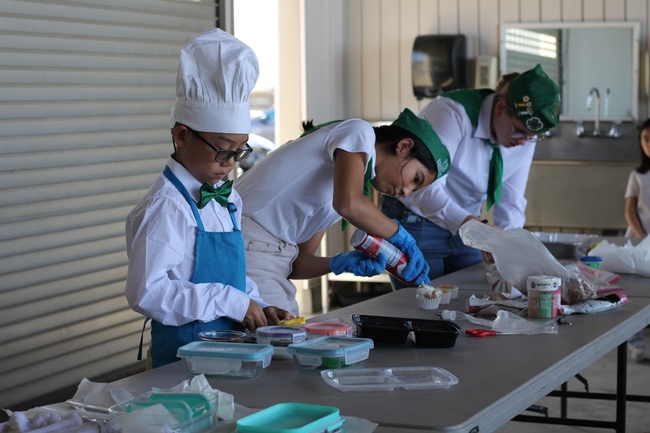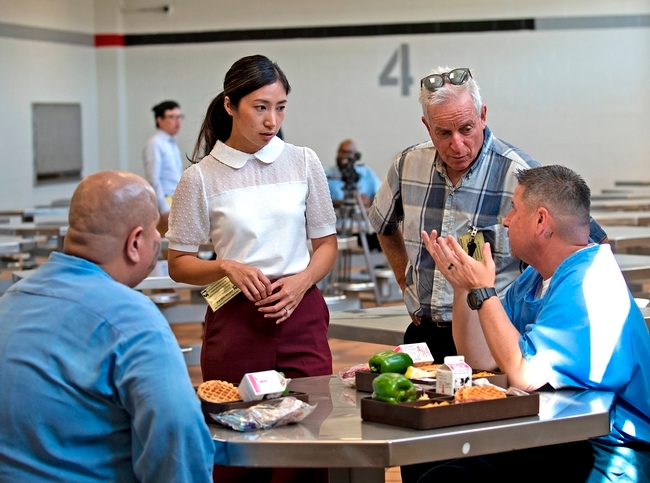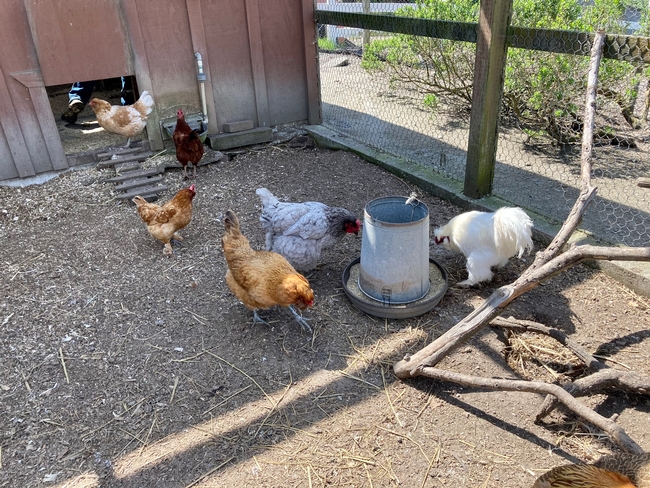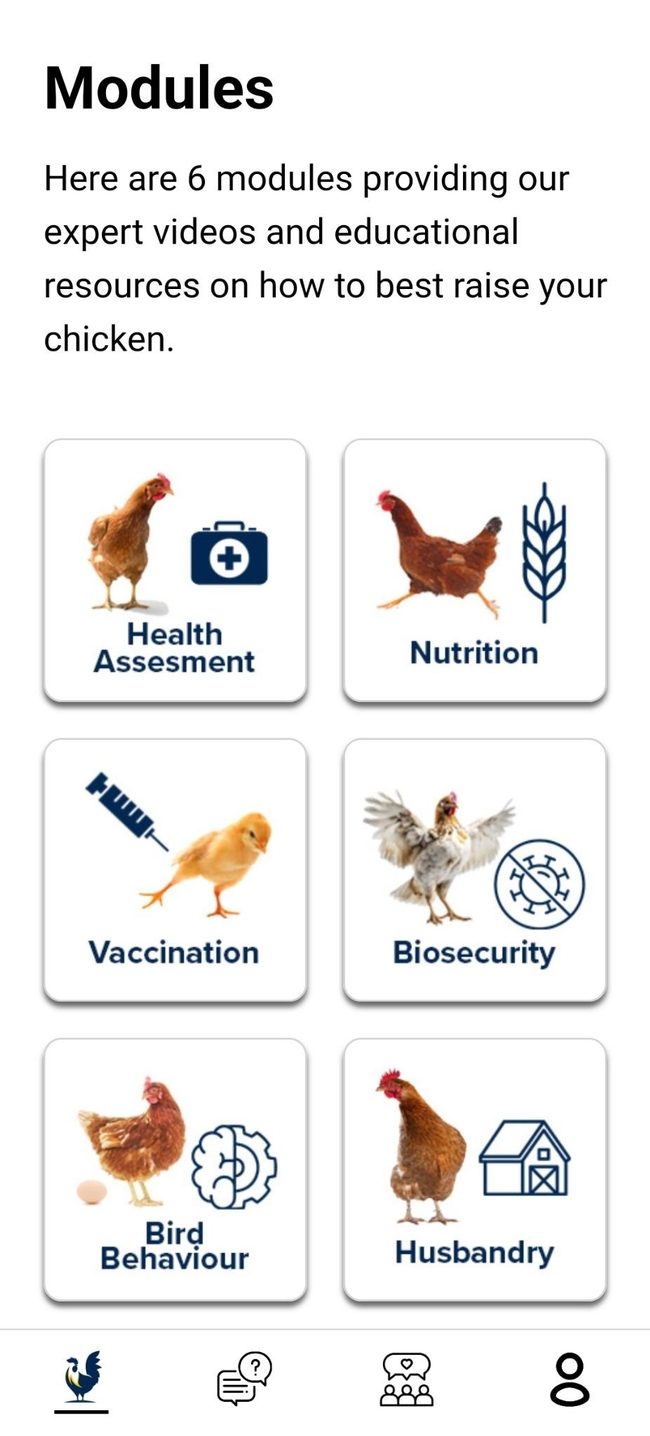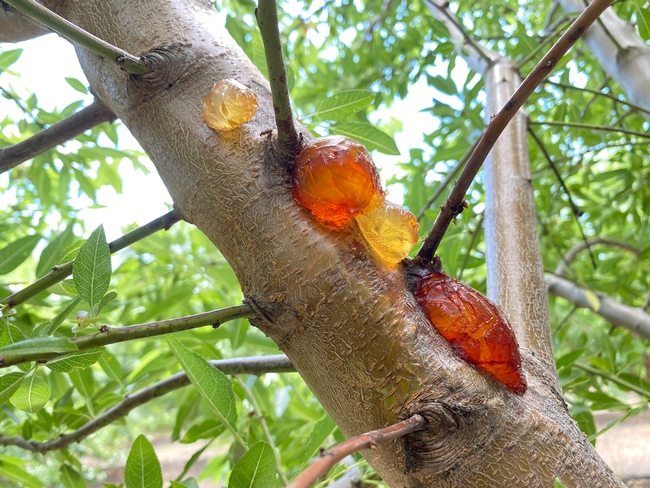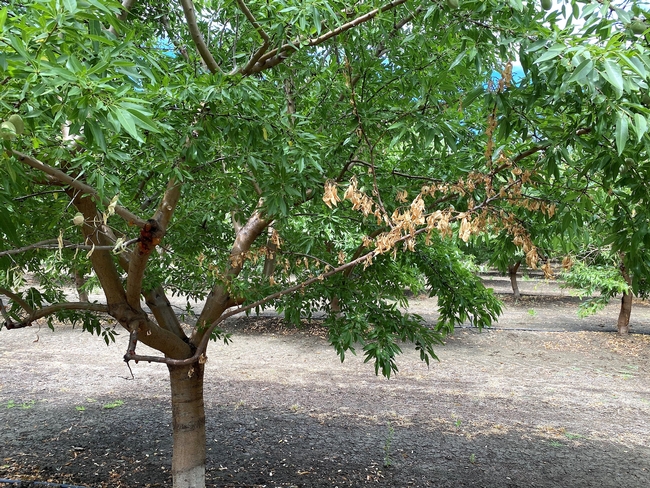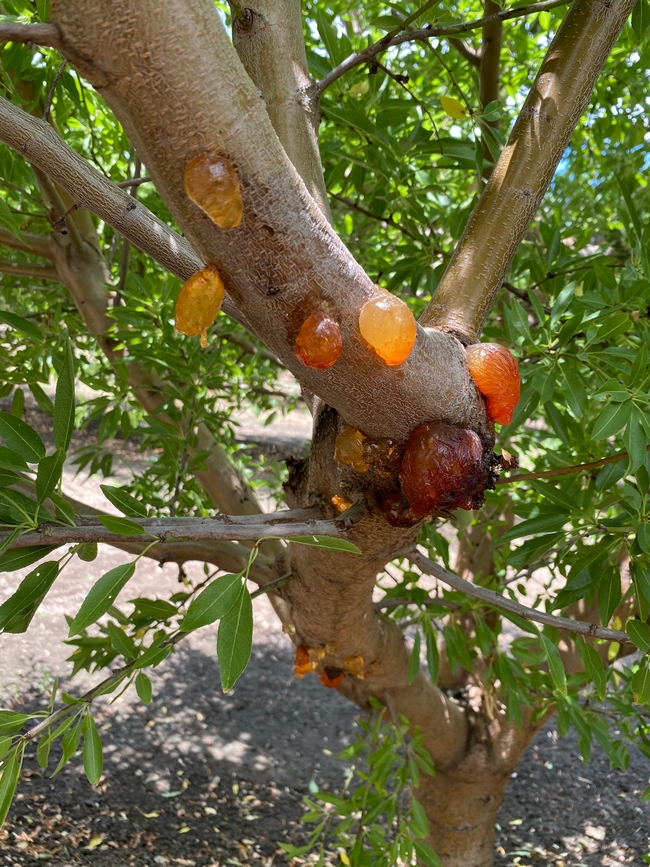UC Food Blog
Climate-smart crop production workshops March 5-7 in Ventura, Salinas and Tulare
Growers invited to learn how to manage risks to fruit, nut, vegetable production
UC Cooperative Extension is offering workshops in Ventura, Salinas and Tulare to help growers adapt their fruit, nut and vegetable production practices to variable climate conditions.
"Growers, farm and ranch managers, and technical assistance providers can learn about the latest research and advances in managing risks to agricultural production that can result from climate change and climate variability,” said Daniele Zaccaria, associate professor in agricultural water management for Cooperative Extension at UC Davis.
Tapan Pathak, UCCE specialist at UC Merced, will speak about climate change trends, potential impacts on agricultural production and decision support tools. Zaccaria and local experts will discuss cover cropping, pests and other issues.
During a roundtable session, participants will discuss their own production challenges resulting from climate change and variability.
“Participants will also learn about tools available to aid manage climate change and climate variability risks," Zaccaria said.
The Climate-Smart Agricultural Production Practices workshops will be held in three locations:
Ventura: Vegetable and Berry Production
March 5 (8 a.m.–1:30 p.m.)
669 County Square Dr., Suite 100
Speakers include UCCE advisors Andre Biscaro, Ben Faber and Mark Battany, and other scientists and experts from Ventura County Resource Conservation District and Land IQ. Register at https://bit.ly/VenturaCrops.
Salinas: Vegetable, Berry and Grapevine Production
March 6 (8 a.m. –2 p.m.)
1432 Abbott St.
Speakers include Daniel Hasegawa and Eric Brennan of USDA-ARS and UCCE advisors Larry Bettiga, Michael Cahn and Mark Bolda. Register at https://bit.ly/SalinasCrops.
Tulare: Fruit and Nut Production
March 7 (8 a.m.–2 p.m.)
4500 South Laspina St.
Speakers include UCCE advisors Jhalendra Rijal, Mark Battany, Mohammad Yaghmour, Sandipa Gautam, Brent Holtz and other scientists and experts from USDA-NRCS, Almond Board of California; California Pistachio Research Board and Land IQ. Register at https://bit.ly/TulareCrops.
Workshops are free and include coffee breaks, lunch, workshop materials along with the presentations. Registration is required.
These workshops are supported by grants from the California Department of Food and Agriculture and USDA's National Institute of Food and Agriculture.
‘Super Carbolicious’ 4-H Food Fiesta challenges young chefs
Inside a quiet classroom, Sadie, a 4-H member in Orange County, stands in front of two judges with an insulated cooler bag in hand. From it she pulls out plates, utensils and napkins and sets them down on the table. She unzips the bottom compartment and carefully reaches for a cast iron platter with golden fluffy pancakes piled on top.
“Would you like syrup with your pancakes? I highly recommend it,” said Sadie, an eighth grader who is participating in the annual 4-H Food Fiesta for a second time.
4-H, a youth development program supported by the University of California Agriculture and Natural Resources and administered through local UC Cooperative Extension offices, promotes hands-on experiential learning for all youth.
Rita Jakel, 4-H program coordinator for Orange County, described the Food Fiesta event – intended for ages 5 to 18 – as an opportunity to practice and showcase public speaking skills through a fun, food-related competition.
Youth present their creations before a panel of evaluators, who ask them to describe how they prepared the dish and why, and how they managed challenges throughout the process. The interaction between youth and adult leaders provides a unique opportunity for youth to practice career readiness skills such as job interviews and public speaking.
This year's theme was “Super Carbolicious” and 4-H participants were encouraged to make their favorite dishes using ingredients like pasta, potatoes and bread. Carbohydrates are often perceived as unhealthy, which is not a helpful mindset to have when teaching youth about nutrition. Carbohydrates provide the body with glucose, which is converted into energy that people need to function throughout the day.
Some of the dishes that were presented during the Food Fiesta included chocolate chip banana bread, cheesy baked potatoes, cookies and Nutella-stuffed crepes. 4-H member Kaitlin had only ever attended the Food Fiesta to cheer on a friend. This year, she decided to participate and presented pumpkin macaroni and cheese as her entry.
“Pumpkin mac and cheese is better than the regular one because there's a lot more flavor and you have to use two cheeses: cheddar and parmesan,” explained Kaitlin, a seventh grader. When asked what motivated her to participate instead of a being a bystander this time around, Kaitlin said that she wanted to work on her presentation skills.
“Usually, I'm a bit shy and I don't like to share that much. The Food Fiesta helped me practice speaking up more so that I can accomplish my goals,” Kaitlin said.
Sadie, who loves public speaking, admits that it wasn't always a strength of hers. “There was a time when I hated public speaking. But when I joined 4-H's cake decorating, poultry and food fiesta events, I got more comfortable with public speaking,” she said. “Now, I like going to events and showing off. I get to show off turkeys, my cakes and, today, I presented homemade pancakes.”
Helping to keep the day's festivities running smoothly were two 4-H state ambassadors: Michaela and Laurelyn, two high school seniors. Both have been involved in 4-H for over nine years, with Laurelyn being a third-generation 4-H member. “My grandmother grew up in a 4-H club in Orange County. She still raises breeding lambs for 4-H members to this day,” said Laurelyn, whose mother was a 4-H member in San Joaquin County.
As state ambassadors, they are responsible for creating and presenting workshops during state, national and regional events. “We also engage the public via social media, specifically TikTok and Instagram (@4horangeco),” said Michaela, who is in her second year as an ambassador.
During the Food Fiesta, Michaela and Laurelyn made themselves available to answer questions from participants and their families. Both ambassadors agreed that seeing parents involved in 4-H should not come as a surprise. “Being in 4-H is a family effort. This isn't an extra-curricular where you just drop your kids off and leave,” said Michaela.
Laurelyn shared that the biggest misconception others have about 4-H is that they think it's about introducing youth to agriculture or livestock. There's a civic engagement and leadership component to it, too. “If parents knew about all the ways 4-H can benefit their kids, I think more people would want to join us,” she said. “And they're finding fun ways to help us learn life skills, like this Food Fiesta.”
The homemade dishes weren't the only thing to look forward to, however. In another building, Sandy Jacobs, volunteer event coordinator, and her team set up a kitchen quiz for members. On several tables, there were different cooking tools and participants were challenged to name as many tools as they could.
In another classroom, while some members were presenting food, others presented their themed table setting décor. Participants had to prepare a complete table setting entry including a menu card, centerpiece and table settings for two. Judges considered creativity, use of color, table setting etiquette, knowledge in talking to the judges, and appearance in their evaluation.
Finally, to wrap up the day, members competed in a cupcake decorating competition. Participants were responsible for bringing their own supplies including tools and edible decorations for Cupcake Wars. Depending on their age group, participants had 20 minutes to decorate two to four cupcakes, each of a different theme.
To learn more about 4-H in Orange County, visit https://oc4h.org/.
Food waste, nutrition in prison focus of webinars Feb. 22, 29
Free webinars about food waste and nutrition in correctional systems will be presented by the University of California Agriculture and Natural Resources.
The UC ANR Sustainable Food Systems Emerging Issues Webinar Serieswill first cover food waste on Feb. 22.
“The Sustainable Food Systems strategic initiative panel aimed to highlight innovative solutions to emerging issues within the food system from field-to-fork,” said Danielle Lee, UC Nutrition Policy Institute director of communications and research engagement.
“Over one-third of all available food in the U.S. is uneaten through food loss or waste – totaling up to over $160 billion – which has negative impacts on food security and the climate,” she said. “Households could save over $370 per person each year by reducing or preventing food waste. Additionally, when uneaten food ends up in the landfill, it generates greenhouse gases, and landfills are now the third largest producers of methane in the U.S.”
“California's adoption of SB 1383 aims to solve these problems,” Lee said. “You'll meet experts who are implementing consumer education and organic waste recycling programs aligned with SB 1383.”
The second 90-minute webinar, on Feb. 29, will focus on nutritious foods for residents of correctional facilities.
“We chose incarcerated people as our case study population for two reasons – the California Department of Corrections and Rehabilitation is the single largest public purchaser of food in the state and studies have shown that 63% of incarcerated individuals rarely or never have fresh vegetables and 55% rarely or never have fresh fruit.”
California has two policies that can support institutional procurement of fresh produce – AB 822 and AB 778.
“The Harvest of the Month program is an innovative solution to implementing these policies while supporting improved nutrition security for incarcerated individuals,” Lee said. “Prison gardening programs can not only provide therapeutic benefits to residents, but also reduce recidivism rates and serve as workforce development opportunities to better prepare residents for returning to their communities post-incarceration.”
Part 1 - Harvesting Solutions: A Trio of Perspectives on Addressing Food Waste from Field to Fork
Thursday, Feb 22, at 10-11:30 a.m. PT
To minimize food waste, three experts explore factors influencing food loss and waste, delve into innovative recycling techniques, and explore statewide initiatives targeting household food waste. Experts in postharvest handling, food waste recycling and community education will share research findings and strategies.
Agenda:
- An overview of food waste in fruits and vegetables
Deirdre Holcroft, Holcroft Postharvest Consulting - Exploring means to extract embodied energy and lower greenhouse gas emissions in food waste recycling
Michael Cohen, UC Cooperative Extension organic materials management and agri-food systems advisor for Santa Clara County - The opportunities in statewide programs in reducing household food waste: Results from UC ANR household food practice needs assessment
Yu Meng, UC Cooperative Extension youth, family and community advisor in Riverside, San Bernardino and Imperial counties
Part 2 - Farm to Corrections: Cultivating Justice through Nutrition and Gardening Initiatives
Thursday, Feb. 29, at 10-11:30 a.m. PT
Experts share insights on groundbreaking initiatives for justice-involved individuals' access to California-grown produce and nutrition and gardening education. Innovative initiatives such as a “Harvest of the Month” program by the California Department of Corrections and Rehabilitation in collaboration with the UC Nutrition Policy Institute and Impact Justice aim to increase access to fresh, locally grown fresh fruits and vegetables and trauma-informed nutrition workshops. They also highlight the impact of UC Master Gardener projects on rehabilitation and workforce development.
Agenda:
- Produce during and after prison: Increasing justice-impacted individuals' access to California-grown produce and nutrition education
Carolyn Chelius, UC ANR Nutrition Policy Institute; Heile Gantan, Impact Justice; Lance Eshelman, California Department of Corrections and Rehabilitations - UC Master Gardeners Prison Gardens Projects
Missy Gable, director of the UC Master Gardener Program
Learn more and register at https://ucanr.edu/sites/StrategicInitiatives/Sustainable_Food_Systems/Events.
Chicken community ‘coop-eration’ needed to test UC poultry health app
If you raise backyard chickens or breed game fowl, UC Cooperative Extension has an app for you. The new mobile app offers information for raising healthy chickens.
To test the usefulness of the UC Community Chicken app to people raising chickens, the Poultry Lab at the UC Davis School of Veterinary Medicine will pay poultry owners to participate in a two-week study with a follow-up survey three months later.
“Our study focuses on the development and evaluation of a new mobile app for backyard chicken owners and game fowl breeders,” said Maurice Pitesky, UC Davis School of Veterinary Medicine associate professor of Cooperative Extension. “The goal is to examine the app's effectiveness as a communication tool within the poultry community.”
To be eligible, participants must be backyard chicken owners who are 13 years or older or game fowl breeders over 18 years of age. They will need to have Apple or Android phones or tablets to access the app.
What's in the app?
The UC Community Chicken app contains six educational modules with short videos that cover health assessment, nutrition, vaccination, biosecurity, bird behavior and husbandry. It also features chat and feedback buttons so participants can communicate with the UC experts and other poultry owners.
“We value the thoughts and experiences of people who are raising poultry,” said Myrna Cadena, Ph.D. student in Pitesky's lab. “Their input will be valuable in shaping the way we extend information about poultry health.”
Study timeline
For two weeks, participants will explore the educational resources and other features and complete the surveys. Three months later, the researchers will follow up with a survey to assess the chicken owners' progress.
Participants who complete the entire study and follow-up survey will receive a $25 Amazon gift card via email. Those who do not finish the entire study will be compensated based on their level of participation. The study will be limited to 220 participants.
To register for the study, go to https://bit.ly/UCchickenapp. Once the study is ready, participants will be notified via email. The UC Community Chicken app will be available to the public after the study is complete. For more information about the study, contact Maurice Pitesky at drcluck@ucdavis.edu.
Almond growers should prepare for possibility of unusual disease outbreak
Wet winter, El Niño create favorable conditions for aerial Phytophthora pathogen
With heavy rains in the forecast amid strengthening El Niño conditions, almond growers should be on the lookout for a rare disease that can cause severe damage to their orchards, according to Florent Trouillas, a University of California Cooperative Extension specialist in fruit and nut pathology.
Phytophthora, soilborne microorganisms dubbed “water molds” because of their dependence on water, typically cause root and crown rot at the base of trees. But a few aerial Phytophthora can travel upwards and infect the higher parts of the tree. One species – Phytophthora syringae – is drawing special attention due to an unprecedented outbreak last winter, fueled by the atmospheric rivers that lashed California.
“It was found statewide – meaning in every almond-producing county – and disease incidence in orchards ranged from 10% of the trees infected to 75%,” said Trouillas, a UC Davis plant pathologist whose lab is based at UC Agriculture and Natural Resources' Kearney Agricultural Research and Extension Center in Parlier.
Trouillas and his colleagues, UC Davis graduate student Alejandro Hernandez and UC Riverside plant pathology professor Jim Adaskaveg, recently published a detailed online article describing the pathogen, which can infect a range of crops but mainly impacts almonds in California.
Although it doesn't kill the tree, the disease causes branch dieback that requires significant additional work and expense for almond growers. In 2022, almonds were the state's fourth-highest valued commodity, at $3.52 billion.
During last year's aerial Phytophthora outbreak, researchers also observed a new and troubling phenomenon: P. syringae, historically known to attack the cuts caused by pruning, was directly infecting the young shoots on almond trees – without any wounds.
“This was really the first time we had seen widespread evidence of infection on the twigs,” Trouillas said.
Although generally rare, outbreaks of P. syringae have been traditionally associated with wet El Niño years, according to Trouillas – and recent and persistent rain across the state should have growers on high alert.
Prune in dry weather, monitor, mitigate if necessary
While almond growers tend to prune during the downtime of winter, they should keep an eye on the forecast and aim for a 10- to 14-day window of dry weather to perform those tasks, whether training young trees or maintaining the established ones.
“If growers were to prune around a rain event – before, during or shortly after – this increases the likelihood of infection because this pathogen moves around with water,” Trouillas explained.
Researchers speculate that P. syringae, normally found in the soil, gets carried into the upper parts of a tree through strong winds and heavy rain. Alternatively, harvest processes like shaking and sweeping also produce air movements that may blow the microorganism into the canopy, where it waits for a favorable wet environment. The pathogen then attacks the wounds or young shoots, producing characteristic cankers and gumming.
The patterns and colors of the gum balls are keys to diagnosing an infection of this particular aerial Phytophthora. Starting around bloom time (mid-February), growers should monitor pruning wounds and young shoots on their trees, especially in the canopy, for signs of the disease.
The unique coloration of the gum balls – ranging from gold and amber to dark burgundy to bright red (see photos) – generally indicates P. syringae infection. But growers are urged to contact their local Cooperative Extension advisor for confirmation.
“It is super critical for growers that, whenever they see gumming, not to assume that it is this aerial phytophthora, because there are many other diseases that can cause gumming on the tree,” Trouillas said.
If the diagnosis is confirmed, growers may apply a compound that can mitigate the infection. The plant pathologists' recent writeup describes several curative treatment options, as well as a preventive measure that reduces the amount of pathogen in the soil and thus the likelihood of infection.
For more information on the pathogen's history and biology, as well as various options for disease management, visit the article on Sacramento Valley Orchard Source: https://www.sacvalleyorchards.com/almonds/trunk-soil-diseases/aerial-phytophthora-outbreaks-in-wet-years.


